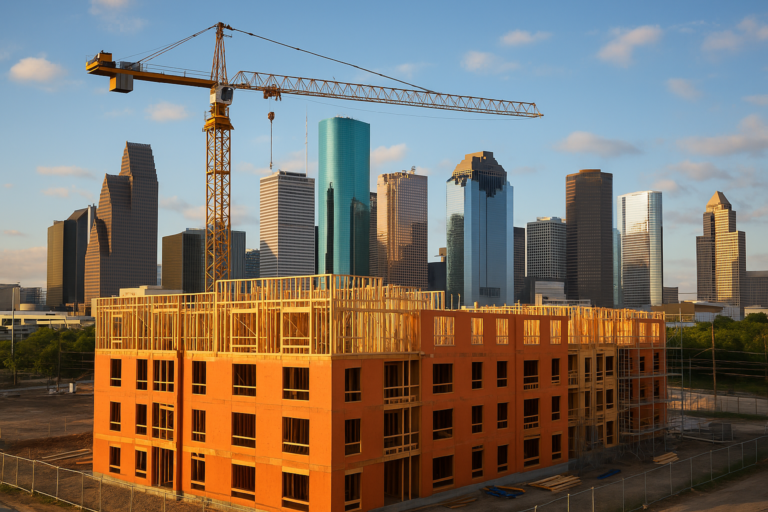What Is Builders Risk Insurance?
Introduction
What Is Builders Risk Insurance? In the world of construction and property development, risks are inherent. From severe weather to theft and vandalism, unexpected events can threaten your investment before a project is completed. For homeowners, contractors, and builders, having the right protection is essential. So, what is this type of coverage? In this comprehensive guide, we explain the fundamentals of builders risk insurance and its importance for various stakeholders. Whether you’re a homeowner wondering about coverage for residential projects or a contractor seeking to understand the specifics of a policy that meets your needs, this article covers it all.
Understanding Builders Risk Insurance
Builders risk insurance—sometimes known as builders all risk insurance—is a specialized policy designed to cover damage to buildings under construction. Unlike standard property insurance, which protects completed structures, this coverage focuses on risks that occur during the building process. For more detailed industry insights check out one of our carriers guide
The Hartford’s Builders Risk Insurance Guide.
What Is This Coverage, Really?
At its core, builders risk insurance protects the physical structure from events such as fire, theft, vandalism, and weather-related damage. It is important to note that this policy is temporary, lasting only during construction. Once the project is complete, standard property insurance typically takes over.
A common question is what losses are covered under this policy. Typically, damage to materials, fixtures, and equipment on-site, in transit, or stored off-site is protected. However, limits apply; for example, injuries to workers are generally not included (these are covered under separate workers’ compensation policies).
Key Elements of a Builders Risk Insurance Policy
1. The Definition and Purpose
You might ask, what is the formal definition of this insurance? It is a form of property insurance providing coverage during the construction phase. Its purpose is to safeguard against financial losses that could derail a project. This is especially crucial in construction where multiple contractors and significant capital are involved.
2. Who Needs This Coverage?
This protection isn’t reserved solely for large commercial ventures. It is equally important for residential projects—answering the question regarding residential builders risk insurance. Homeowners building a new home or undertaking major renovations can benefit from such a policy. Contractors also frequently secure these policies to protect their work from unforeseen incidents. For additional details, check out our construction insurance services.
3. What Does the Policy Include?
Understanding the inclusions is key to adequate coverage. A typical policy might cover:
-
Damage from fire, lightning, windstorms, and hail.
-
Vandalism and malicious mischief.
-
Theft of materials and equipment.
-
Accidental damage during construction.
-
Some policies extend to include coverage for temporary structures or storage facilities on-site (shelter insurance).
In specialized cases, you might encounter tailored policies for specific risks—for instance, coverage for waterfront constructions or projects that involve shipping materials.
4. Policy Variations and Special Cases
This type of coverage isn’t one-size-fits-all. For example, blanket builders risk insurance covers multiple properties or projects under one umbrella, while completed value builders risk insurance relates to the final valuation once construction is finished. These nuances are important when comparing quotes or evaluating overall costs. For a broader industry perspective, visit
Forbes Advisor.
Benefits and Considerations
Advantages of This Coverage
-
Financial Protection: This insurance provides a safety net against catastrophic losses during construction, covering repair or replacement costs if damage occurs.
-
Peace of Mind: Knowing that your project is protected offers significant reassurance, especially for those investing in high-stakes construction.
-
Customizable Coverage: Policies can be tailored based on project scope, with options to adjust limits and endorsements. For more guidance, see our insurance quote guide.
Considerations and Limitations
-
Policy Gaps: It’s essential to review what is covered and what isn’t; many policies exclude employee injuries or liability claims, requiring additional coverage.
-
Cost Factors: When considering overall pricing, remember that costs depend on project duration, location, and value.
-
Temporary Nature: This insurance is only active during construction, so a transition to permanent property insurance is needed once the project is complete.
Real-World Scenarios
Consider a scenario where a contractor is building a custom home and a severe storm damages part of the structure midway through construction. With the right policy, the contractor can file a claim to cover the damage, avoiding financial ruin. Similarly, a homeowner undertaking major renovations might find that this coverage can mean the difference between a minor setback and a project-ending disaster.
Addressing Common Questions
Many clients have recurring questions about this type of coverage. Here are a few answered:
-
What does this policy cover?
It generally covers damage to the building structure, on-site materials, and items in transit or temporary storage, but excludes liability and injuries. -
Who typically needs this coverage?
Contractors secure it to protect their investments during construction, while homeowners use it for major projects. -
What is a policy quote?
This is an estimate provided by insurers based on your project’s value, timeline, and specific risk factors. -
What about coinsurance?
Some policies include a clause requiring coverage up to a set percentage of the building’s value to avoid penalties. (More on coinsurance in our Blog 3.)
The Process of Getting a Policy
When you’re ready to secure coverage, the process is straightforward. First, assess your project’s value and unique risks. Next, request a quote—keep in mind that quotes can vary by insurer and project specifics. Finally, compare policies not only by price but by the scope of coverage they provide. This will help answer questions such as overall cost and alignment with your project needs.
Special Considerations for Different Projects
Different projects require different approaches. For example:
-
Residential Projects:
Homeowners should understand how this coverage differs from commercial policies. Residential projects, including renovations or new builds, have distinct risk profiles. -
Commercial and Contractor Projects:
Contractors and developers need to focus on policies designed for larger sums and complex endorsements. -
Unique Cases:
In specific situations, such as waterfront construction, you may require specialized coverage. Similarly, policies based on a project’s completed value ensure that the final valuation is accounted for.
Cost Considerations
Cost is a frequent concern. Many ask about the average cost or price for this type of insurance. The answer depends on several factors:
-
Project Size: Larger projects typically incur higher premiums.
-
Duration: Longer construction periods increase potential risk exposure.
-
Location: Areas prone to severe weather or theft may see higher premiums.
-
Coverage Limits: Policies with broader scope or higher limits naturally cost more.
It’s advisable to speak with an insurance expert who can explain these variables and help you understand the overall cost for your specific project.
2025 Considerations
Inflation and Supply Chain Disruptions:
In 2025, inflation continues to push up the cost of raw materials, labor, and equipment used in construction. These rising expenses strain project budgets and affect project valuations – key for determining insurance premiums. Additionally, global supply chain disruptions lead to delays and shortages of critical components. As a result, insurers are adjusting coverage requirements and pricing models to better reflect the increased risk of project overruns and material scarcity.
Extreme Weather Events
Climate volatility has become a central concern in risk assessments for construction projects. Extreme weather events such as hurricanes, floods, and wildfires are more frequent and severe, prompting insurers to revisit risk models and pricing structures. In response, policies are increasingly tailored to account for these heightened hazards by incorporating detailed climate data and sometimes requiring higher coverage limits or specific endorsements.
Technological Advancements and AI
The integration of artificial intelligence and real-time data analytics is transforming the insurance industry. In 2025, dynamic pricing models leverage AI to more accurately assess risk based on live market conditions and project-specific factors. Enhanced risk modeling allows insurers to predict potential losses more precisely and adjust premiums accordingly. Additionally, technologies such as drones, IoT sensors, and digital twins provide granular data to streamline claims resolution.
ESG Considerations
Environmental, Social, and Governance (ESG) factors are increasingly influencing underwriting criteria in the builders risk market. Insurers now offer incentives for projects that adopt sustainable practices—such as eco-friendly materials and energy-efficient designs—while projects that fail to meet modern standards may face higher premiums or reduced coverage options.
Evolving Legal and Regulatory Landscape
Recent legislative changes and industry guidelines are reshaping the builders risk market in 2025. New laws affecting construction standards, labor practices, and environmental compliance are prompting insurers to update policy language and coverage requirements. For example, modifications in coinsurance requirements or new rules regarding emerging construction methods such as modular or 3D-printed buildings are driving changes in policy structures.
Conclusion
In conclusion, builders risk insurance is a vital safeguard for any construction project. Whether you’re asking out of curiosity or need detailed coverage for a specific project, understanding the ins and outs of these policies is essential. By exploring topics such as policy details, coverage limits, and even nuances like what is included in this protection, you can make an informed decision that protects your investment.
For homeowners, contractors, and developers alike, this insurance plays a critical role during construction. With a clear understanding of the coverage, limitations, and costs involved, you’ll be better prepared to navigate the challenges of building projects. Ultimately, knowing the purpose of builders risk insurance helps ensure that whether your project is residential or a large commercial development, you’re taking the right steps to protect your financial interests.
References:



